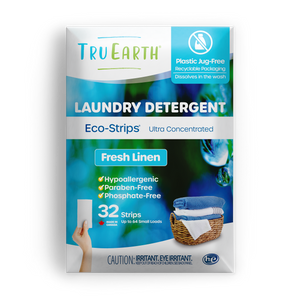Your cherished vehicle may be sleek and shiny, but those stubborn hard water spots can be a real eyesore. Fear not, for we're about to start on a journey through car care, specifically addressing the pesky issue of hard water spots.
This guide will offer more information to understand why they appear and equip you with practical techniques to bid them goodbye!

Hard Water Spots: The Culprits Revealed
The primary antagonists in this tale are the minerals found in water, predominantly calcium and magnesium. As water droplets evaporate on the surface of your car, these minerals are abandoned, giving rise to unsightly spots that can tarnish the pristine appearance of your vehicle.
In regions where hard water is prevalent, these spots tend to be more than just occasional nuisances; they evolve into persistent challenges, compromising the aesthetic appeal of your cherished automobile.
Why Worry About Hard Water Spots?
You might be questioning the necessity of dealing with hard water spots – "Why bother?" you may wonder. Beyond the apparent cosmetic nuisance, these spots pose a more insidious threat by gradually etching into your car's paint over time.
The minerals in hard water, acting like minuscule abrasive particles, initiate a slow but persistent erosion of the protective layers on your car's surface. This continuous wear and tear makes your vehicle increasingly susceptible to additional damage, such as rust and corrosion.
Therefore, the urgency in addressing hard water spots transcends mere aesthetics; it's a pivotal element in safeguarding and prolonging your car's overall health. Prompt action preserves its polished appearance and fortifies its resilience against the long-term effects of mineral-induced deterioration.
The Tools of the Trade: What You'll Need
Gathering the right tools is the first step in your battle against hard water spots. To wage war effectively, arm yourself with the following:
- White Vinegar: A versatile and effective acidic solution for breaking down mineral deposits.
- Microfiber Towels: Soft and non-abrasive, ensuring you don't introduce new scratches during cleaning.
- Water Spot Remover: Commercially available products designed to combat hard water spots.
- Clay Bar: A gentle but effective tool for removing contaminants from the car's surface.
- Car Wax or Sealant: To protect your car's paint after cleaning.
Hard Water Spot Removal Techniques: A Step-by-Step Guide
Pre-Wash Rinse
Begin by giving your car a thorough rinse. This helps remove loose dirt and prepares the surface for the cleaning process.
Vinegar Solution Application
Mix white vinegar and water (equal parts) and apply it to the hard water spots. Let it sit for a few minutes to allow the acidic properties of the vinegar to break down the mineral deposits.
Gentle Rubbing
Using a microfiber towel, gently rub the affected areas. Avoid applying excessive pressure to prevent scratching. The goal is to lift the softened deposits.
Clay Bar Treatment
For persistent spots, use a clay bar. Lubricate the surface with a quick detailer or water and gently glide the clay bar over the spots. This helps pull out embedded contaminants.
Water Spot Remover
If vinegar alone doesn't do the trick, consider using a commercial water spot remover. Follow the product's instructions for application and removal.
Rinse and Dry
After successfully removing the hard water spots, give your car another thorough rinse. Dry it with a clean microfiber towel to prevent new water spots from forming.
Apply Wax or Sealant
Finish the process by applying a layer of car wax or sealant. This adds a protective coating to guard against future water spots and enhances the overall shine of your vehicle.
Preventing Future Encounters: Tips for Water Spot Prevention
Now that your car is spot-free, how can you prevent a resurgence of these unwelcome guests?
Regular Washing
Establish a routine for washing your car, especially in areas with hard water. Regular cleaning minimizes the chances of mineral buildup.
Use a Water Softener
Consider investing in a water softener for your home, which can reduce water's hardness and lower the risk of hard water spots.
Quick Drying
After washing, promptly dry your car with a clean microfiber towel or chamois to prevent water spots from forming as the water evaporates.
Protective Coatings
Apply a quality car wax or sealant regularly. These products create a protective layer on your car's surface, making it more resistant to mineral deposits.

A Gleaming Victory Over Hard Water Spots
There you have it — a comprehensive guide to liberating your car from the clutches of hard water spots. By understanding the enemy, employing the right techniques, and adopting preventive measures, you can keep your vehicle looking pristine.
So, roll up your sleeves, gather your tools, and let the battle against hard water spots commence. Your car's gleaming victory awaits!


